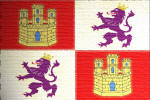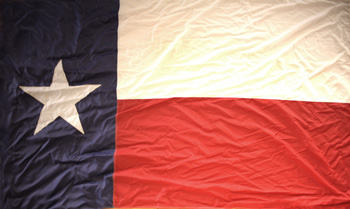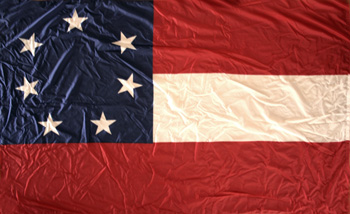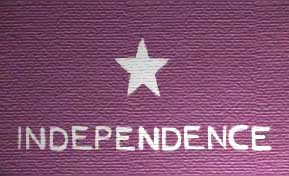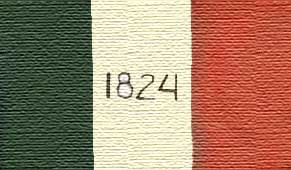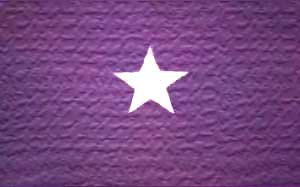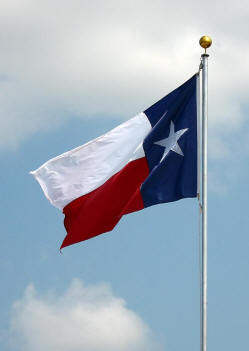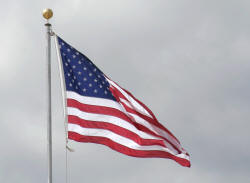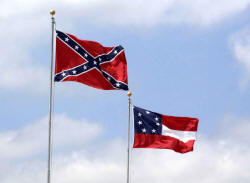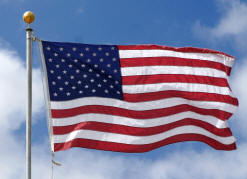Republic of Texas Flags
![]()
This Site:
|
In Addition to these well known National flags, Texans rallied around a variety of flags. As you consider these flags, notice how each expresses a key "message" that Texas was trying to deliver. These messages were being sent both to the People of Texas, Santa Anna, and the rest of the world. Notice the defiant and combative themes in many of these flags. |
|
|
Captain Scott "Independence Flag" |
By the mid-1830's, the idea of independence from Mexico was gaining wide spread support in Texas. This growing theme became a movement, and its followers were known as independence radicals. Captain Scott was one of the independence radicals. These men were against negotiation, dialog, and delay . . . they supported an immediate declaration of Independence from Mexico. Scott had this flag made, which prominently featured his answer to the issues in Texas at the time; INDEPENDENCE. He realized that independence meant war, and he was ready for the fight. Captain Scott and his company of 30 men reported to San Felipe, the capital of Austin's colony, and they were deployed to Goliad. Colonel James Fannin and his men were also at Goliad at the time. Texas did Declare its Independence on March 2, 1836. Fannin, and all his men perished at the Massacre of Goliad, on March 27, 1836. Note that this is a very early flag featuring a "Lone Star". |
|
The Alamo Battle Flag |
Representatives of the 13 settlements in Texas met at San Felipe de Austin, the headquarters of Austin's colony, in November of 1835 to form a provisional government. The council stopped short of declaring independence from Mexico, but instead, they declared allegiance to the 1824 Mexican Constitution. This was a wise move intended to clearly express their desire for basic rights, but at the same time, hopefully, avoid war, which many felt they were unprepared for. They were willing to remain part of Mexico as long as they enjoyed the rights of the 1824 constitution. To make people aware of Santa Anna's disregard for the constitution, and their support for it, this variation of the Mexican flag was made. The Mexican emblem in the center of the flag was replaced by the date "1824". This flag sent a clear and strong message to Santa Anna. The flag was a bold act of defiance against the Mexican dictator. This was the flag which flew over the Texans at the Battle of the Alamo. While the flag sent a defiant message to Santa Anna, it was relatively conciliatory to Mexico in general, in that it was expressing support of the constitution, and it had no "Lone Star". |
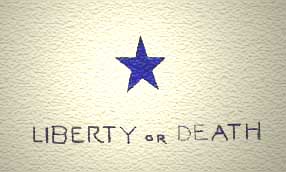 Texas Troutman Flag |
The defiant spirit of the Texans was capturing the imagination of many of the people in the United States. Joanna Troutman, an 18 year old girl from Macon Georgia made this flag for a group of Georgians who were going to Texas to support the Texas Independence movement. While it was not made by a Texan, it clearly captured the spirit of the Texans, and their willingness to die for the cause. This flag was raised when the Georgians arrived at Velasco. It was an inspirational symbol in the desperate time between the Battle of the Alamo and the victory at San Jacinto. Joanna Troutman is remembered as a hero to this day. She died on July 23, 1879, and her portrait hangs in the state capitol. This flag captures a theme of the American Revolution . . . Victory or Death, which had been made famous in a speech by Patrick Henry. |
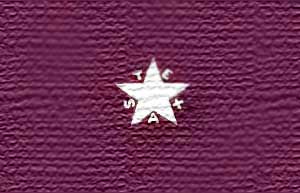 First Flag of the Republic |
The first Constitutional Convention Declared Texas' Independence from Mexico, wrote the first Republic of Texas Constitution, and appointed its first leaders. During the session, they also designed and approved a flag for the new republic. This flag would be considered the first "official" flag of the Republic of Texas. This flag, again, is a symbol of defiance. It shows a lone star, labeled "Texas", just in case anyone wondered what the lone star represented. A committee of five delegates, all signers of the Texas Declaration of Independence, was selected, and their choice for a new flag was approved by the convention on May 11th, 1836. The design of the flag also served as the reverse side of the new Republic of Texas Currency. |
 Republic of Texas Gonzales Flag |
Perhaps no flag was more defiant than this one, showing a cannon, and the challenge, "Come and Take It". In late September, 1835, the Mexican garrison at San Antonio, sent a few men to Gonzales to recover a cannon that had been loaned to the town. The citizens of Gonzales denied the request. The Mexicans sent dragoons under Captain Francisco Castaneda to demand the cannon be returned. As word of the conflict spread, a group of 200 armed Texans was formed. Two women in Gonzales, Cynthia Burns and Evaline DeWitt, painted this flag on cotton cloth, depicting the cannon, the Texas Lone Star and a clear taunt to the Mexicans. The Mexican troops moved north to Gonzales. The Texans decided that they had to attack before the Mexican force grew larger and stronger. They crossed the river that evening, formed their battle lines and surprised the Mexicans at dawn on October 2nd, 1835. The battle that day was short; when the Texans opened fire, the Mexicans withdrew. This flag, perhaps better than anything else, captures the defiant, independent spirit of Texans that exist to this day. |
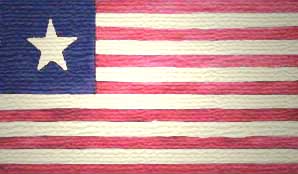 Texas Navy Flag |
In November of 1835 the General Council of Texas commissioned the Republic of Texas Navy. The first ships in the Texas Navy was the Independence, Brutus, Liberty and Invincible. The flag of the Texas Navy was created by Charles Hawkins, who was later appointed as the first Commodore of the Navy. The Navy participated in a failed expedition to capture Tampico. The expedition was outfitted in New Orleans. Mexia, the leader, tricked a number of men in the city to join the expedition, telling them that they would be taken to Texas, and would become emigrants there. They were not told the real objective was to engage in a battle to capture Tampico. The expedition was successful in capturing a fort on the beach, but the anticipated popular uprising among the Mexicans did not develop, and the small force was quickly captured. While Mexia and Hawkins managed to escape, the remainder of the men were captured and executed. |
|
First Lone Star Texas Flag |
The first Lone Star Flag of Texas Texas created by Sarah Dodson for her husband Archelaus, a member of the Texas Volunteers. Archelaus's company marched under the Dodson Flag to San Antonio, and they fought under this flag during the siege of San Antonio and the Texan's capture of the Alamo. |
|
Second "National Flag" of the Republic of Texas |
In December of 1836 the new Texas Government approved the recommendation of David Burnett (Texas President) for a new design for the "National Flag" of Texas. The flag was inspired by the 1810 Bonnie Blue Flag of West Florida. Some flags were made with gold stars, while other variants had white stars. Little consideration was given to the previous National Flag design which had been adopted eight months earlier. This flag did not carry the defiant messages of the earlier flags, and represents the theme of Texas as a independent nation, and getting on with the business of building the country. On March 3rd, 1837, the Republic of Texas, under this flag, was recognized by the United States as an independent nation. |
|
Third Republic of Texas Flag |
With Santa Anna's surrender, Texas gained its independence, and became a sovereign nation. With this new found independence, it was logical to create a better flag. In 1839 the flag that we now associate with Texas was designed and approved. The flag maintained its lone star, and serves as a banner and symbol for state to this day.
|
Modern Texas Flags |
||
Flag of Texas |
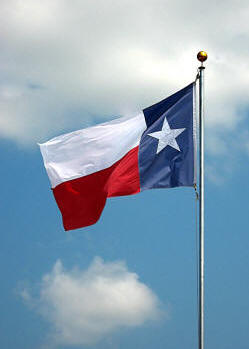 Texas Flag |
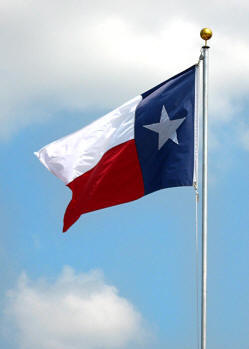 |
More Flags that have Flown Over Texas |
||
|
Also See History of the American Flag |
||
![]()
|
Site Copyright © 2003-2018 Son of the South. For questions or comments, contact paul@sonofthesouth.net. |
|
|
|
Are you Scared and Confused? Click Here to read My Snake Story, a story of hope and encouragement, to help you face your fears. |
||
